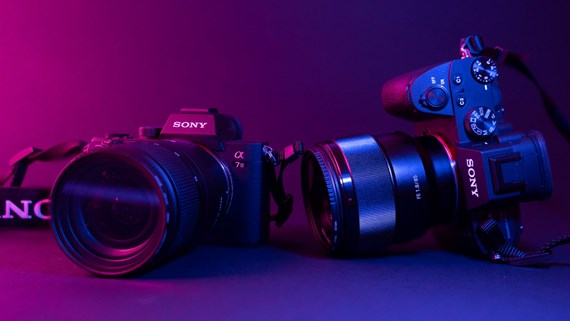It’s MY picture: Miley Cyrus sued for posting paparazzi photo of herself on Instagram
Insight

Miley Cyrus is the latest in a run of celebrities facing copyright infringement claims from photographer Robert Barbera, who brought a claim against Miley on 9 September 2022 in a California federal court, over her Instagram post which featured a paparazzi shot he took of her.
Background
Miley Cyrus, the US singer, songwriter and actress, currently boasts an impressive Instagram following of 182 million. Paparazzo Robert Barbera has brought a copyright infringement claim against Miley for posting an image of herself, taken by Barbera as she left a building in 2020, to her followers.
The Miley fandom (known as “Smilers”) may have been up in arms about this, appealing to common decency, fairness and ethics, but in copyright terms, the “Wrecking Ball” singer looks slammed to rights.
Copyright Law
Under UK copyright law, a photograph will generally be protected as an artistic work of the author. Putting to one side any questions of privacy or so-called “image rights”, who the subject of the photograph is does not matter.
The starting position, under both UK and US law, is that the creator of the work (the person who pointed and clicked the camera) is the first owner of the photograph. In this case, that is Barbera. He is the one who thereby obtains exclusive rights in its use. Whether he had Miley’s permission to take the photo or use it commercially is irrelevant to the copyright position.
There are some exceptions to this starting position. For example, if the photographer is an employee and the work is created as part of their role, or when an agreement is in place which specifically assigns the photographer’s work, such as a commissioning or licensing agreement. Sometimes this will come in the form of a “Work For Hire” agreement in the US, though this is not a UK copyright law term.
Owners of private venues can also seek to impose conditions of access on photographers, imposing rules and restrictions on photography at the venue. This could give rise to a contractual claim by the venue, but only a specific assignment would affect the ownership position.
For this reason, canny celebrities have been known to purchase rights to photographs of themselves from the original photographer in order to take action against media outlets who disseminate them (eg because they are unhappy with the coverage). Of course, that is no help when the photographer themselves are not onside.
All told, without any such assignment of rights, even Miley would be in the same strict legal position as anyone else: needing the permission of the copyright owner(s) to perform certain acts, such as sharing the photograph on their social media accounts.
The fact is that many rights holders don’t police this kind of use of their image, perhaps because the value of any use is perceived as low or they are ordinary fans, happy for any recognition they get. But this social media sharing culture can lead to casual recycling of copyrighted images, which constitutes an infringing act that may land the poster in trouble. The wily Barbera is clearly aware of this, having already sued Justin Bieber, Ariana Grande and Dua Lipa (twice) in similar circumstances, all of whom are understood to have settled out of court.
Exceptions and defences
Some reposting of images on social media, and some republishing elsewhere of images taken from social media, may be subject to exceptions or defences. The concept of “fair dealing”, or “fair use” in the US, is widely spoken of but poorly understood. It is, however, certainly more limited in the UK than it is in the US.
In the UK, to qualify for fair dealing, not only must the use be “fair” in the sense of not unduly taking away from the commercial value of the rights, but it must fall into one of various limited categories, such as criticism or review, quotation, parody or pastiche. There is an exception too for news reporting, but crucially it does not apply to photographs (to protect the livelihood of press photographers).
Fair use considerations under US law are far wider, in particular the controversial question of whether the new use of the work is somehow transformative, ie altered in such a way as to render it a new work. This does not appear to have been the case here, however, and nor would this argument work in the UK.
Image rights and Privacy
What about Miley’s rights to protect and exploit her own image? Certain US states do recognise the commercial value of “personality rights” but, although widely discussed as a commercial notion, image rights can be an elusive legal concept. In the UK the term has no legal recognition, although use of images may be relevant to claims of false endorsement (ie where there is a misrepresentation that the celebrity is connected with, or has somehow endorsed, a product). Notably, in 2015 Bajan superstar Rihanna successfully prevented Topshop from using a photograph of herself in a line of t-shirts.
Once published by newspaper outlets or online, photographs taken by paparazzi may separately be held to constitute an actionable breach of privacy in the UK or EU. There are also data protection considerations, but relevant exemptions for art and journalism make this basis of claim less attractive. All depends on the context and whether the subject has a reasonable expectation of privacy.
The Miley image was taken in a public place, where it is harder to show this expectation of privacy without, for example, an additional element of intimacy or family life that is infringed by publishing the image. Back in 2004, photographs of Naomi Campbell leaving a Narcotics Anonymous clinic published by Piers Morgan’s Daily Mirror were held to be a breach of the law of confidence and damages were awarded to the supermodel under the Data Protection Act 1998. These days, such a case would be decided under the tort of misuse of private information in the UK, which the case helped develop.
Generally, it is the publication and use of the image (rather than the mere taking of it) which may be actionable, although a particularly aggressive and repeated course of conduct by a paparazzo may be held to constitute harassment.
Summary
Barbera is alleging that Miley received a financial benefit from the infringing post, which boosted traffic to her account and increased revenue generated by the sale of her music. Barbera claims that Miley’s “impermissible use has crippled if not destroyed the potentiality of any market for the Photograph”. Put simply, by Miley posting the picture on a public forum for free, Barbera can no longer profit from the picture, even if he might be raising his own profile in the meantime.
There are a wide range of opinions when it comes to the ethics of celebrity photography. Some point to what they see as the undue profiteering of (sometimes wholly unskilled) photographers, relying on the fame and hard work of others who have built their own name and brand. These commentators would argue for the creation of an image right or cite undue invasion of privacy.
Others talk of the price of fame, suggesting a Faustian pact between certain celebrities and the media (or indeed the paparazzi, with Rebekah Vardy gaining recent notoriety on this front during the so-called “Wagatha Christie” libel trial). Many journalists, and some creatives, will simply point to the fairness and certainty of rewarding the photographer for their skill and artistry, and copyright law pays little attention to the moral or artistic value of the image.
Comment
-
Photographs are protected by UK copyright law. The first owner is likely to be the photographer, acquiring exclusive rights as a result and crucially including the ability to stop others from exploiting or using the photograph.
-
Whilst other legal considerations may come into play, eg privacy, harassment, claims of false endorsement, the UK does not have any legal recognition of image rights.
-
Despite the close relationship between some celebrities and paparazzi, a surge in successful copyright cases brought by paparazzi may lead to changes in how celebrities use images online.
If you require further information about anything covered in this briefing, please contact Owen O’Rorke, Sufi Rahimi or your usual contact at the firm on +44 (0)20 3375 7000.
This publication is a general summary of the law. It should not replace legal advice tailored to your specific circumstances.
© Farrer & Co LLP, October 2022







